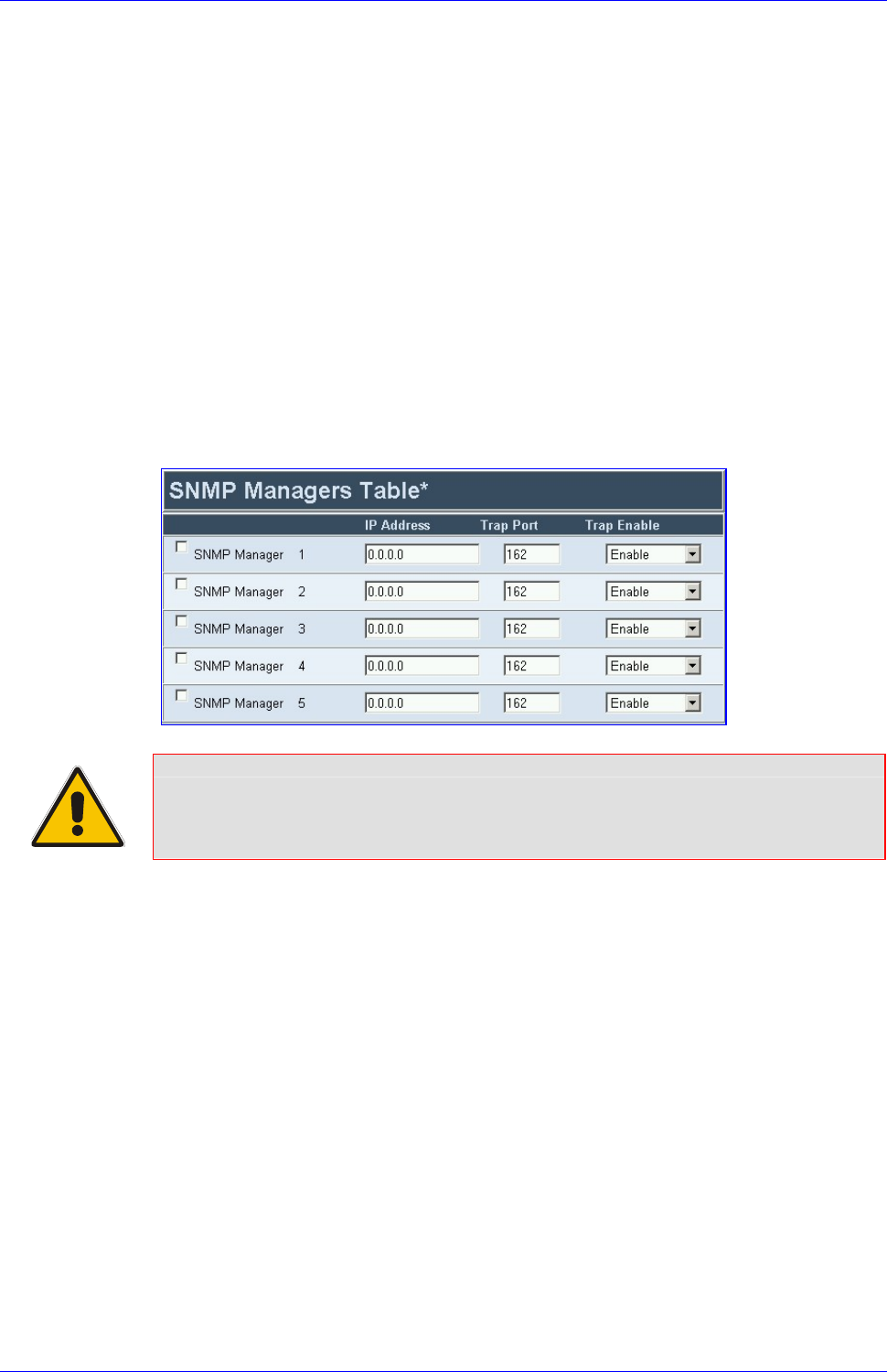
Mediant 2000 SIP User’s Manual 5. Web Management
Version 4.4 63 July 2005
5.9.1.1 Configuring the SNMP Managers Table
The SNMP Managers table allows you to configure the attributes of up to five SNMP managers.
To configure the SNMP Managers Table, take these 6 steps:
1. Access the ‘Network Settings’ screen (Advanced Configuration menu > Network
Settings); the ‘Network Settings’ screen is displayed (Figure
5-14).
2. Open the SNMP Managers Table screen by clicking the arrow sign (-->) to the right of the
SNMP Managers Table label; the SNMP Managers Table screen is displayed (Figure
5-15).
3. Configure the SNMP managers parameters.
4. Click the Submit button to save your changes.
5. Click the Close Window button.
6. To save the changes so they are available after a power fail, refer to Section
5.12 on page
84.
Figure
5-15: SNMP Managers Table Screen
Note: If you clear a checkbox and click Submit, all settings in the same row revert
to their defaults.
5.9.1.2 Multiple Routers Support
Multiple routers support is designed to assist the media gateway when it operates in a multiple
routers network. The gateway learns the network topology by responding to ICMP redirections
and caches them as routing rules (with expiration time).
When a set of routers operating within the same subnet serve as gateways to that network and
intercommunicate using a dynamic routing protocol (such as OSPF, etc.), the routers can
determine the shortest path to a certain destination and signal the remote host the existence of
the better route. Using multiple router support the media gateway can utilize these router
messages to change its next hop and establish the best path.
Note: Multiple Routers support is an integral feature that doesn’t require configuration.
5.9.1.3 Simple Network Time Protocol Support
The Simple Network Time Protocol (SNTP) client functionality generates requests and reacts to
the resulting responses using the NTP version 3 protocol definitions (according to RFC 1305).
Through these requests and responses, the NTP client is able to synchronize the system time to
a time source within the network, thereby eliminating any potential issues should the local system
clock 'drift' during operation. By synchronizing time to a network time source, traffic handling,


















